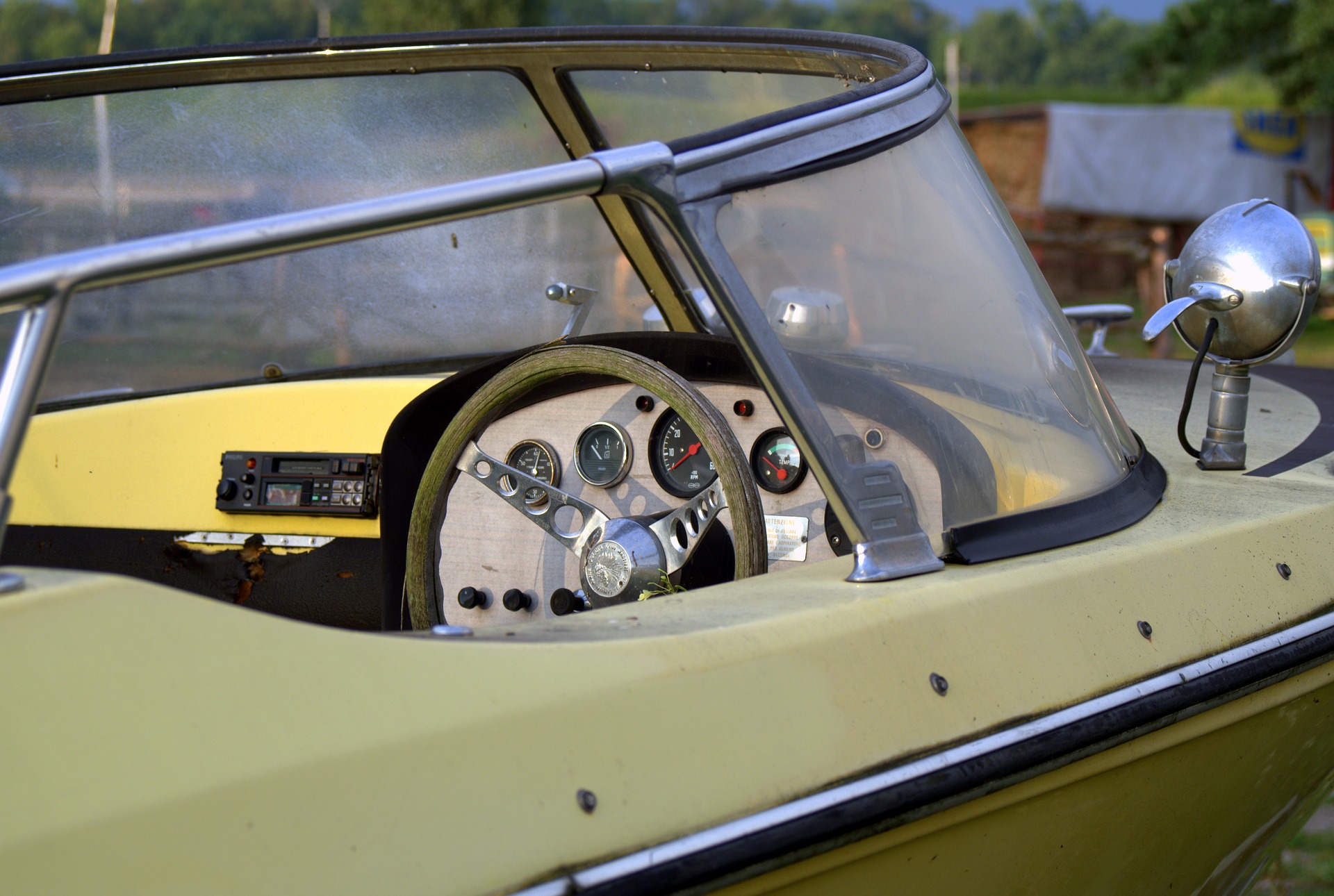The helm of a boat is where the operator sits to drive, whether a certified captain or recreational boater. In Georgia, South Carolina, and North Carolina, there is ample opportunity to go boating between the fresh and salt bodies of water. Positioned at the help are depth, location, speed, engine rotations, and other electronics. The electronics measure information critical to the operation of the vessel. Read to learn about the electronics most frequently installed at the boat helm.
Global Positioning System
A GPS or global positioning system guides the operator while underway. GPS unites track motion through the water and allows the operator to input destinations via waypoints, thus creating a course line.
Boat Operators follow the courseline created in the GPS from point A to point B. A GPS is highly beneficial to an operator for navigation purposes and to avoid dangerous areas of operation, including shallow water, rocks, reefs, and more.
Depth Finder
Contrary to popular belief, a depth finder is not an electronic device to prevent you from running aground. The depth finder is not measuring depths forward of the bow boat rather beneath the transom of the vessel.
Helm mounted depth finders are an excellent resource for anglers. Anglers monitor the seafloor below for structure and depth changes that commonly hold fish when drifting or fishing at anchor. In addition to benefiting fishermen, boaters headed to the beach gauge depths when backing the boat as close to the shore as possible.
Very High Frequency Radio
When it comes to safety, VHF radios are a must. The radio is essential for receiving important information, including hazards to navigation, weather, and calls from boaters in distress.
When in danger radios are critical for calling for help in addition to receiving pertainant information. The Coast Guard and boaters in the vicinity become notified by sending a distress single via the radio.
Anglers find VHF radios beneficial because fellow fisherman share information over the radio. The reports include where the fish are biting, what tackle is most effective, and the size of the catch thus increasing the likelihood of catching fish.
We recommend the Standard Horizon VHF radio. When you’re in the market for a marine radio capable of withstanding the elements check out Standard Horizons.
Auto Pilot
Autopilots are as they sound; the helm mounted control adjusts the course of the vessel by depressing the direction buttons.
An autopilot system is not standard on all watercraft. Autopilots are not common on watercraft smaller than 30 feet. The electronic control at the helm is manipulated by the touch of a button resulting in the ability to turn the vessel to the port or starboard side. Autopilots respond by adjusting the rudder angle, changing the vessel’s direction to the port or starboard. Boaters avoid oversteering by switching from manual operation to autopilot.
Speedometer
Like a car, the boat’s speed is measured by a speedometer. Speedometers are most frequently mounted among a cluster of gauges within direct sight of the operator.
At the base of the speedometer lies the hour meter. The hour meter reads as a digital display and shows the number of hours the engine has operated. Hour meters are essential to determine when the engine requires maintenance.
Engine Crankshaft Rotations Per Minute
The engine crankshaft rotations per minute are termed as RPM’s or rotations per minute. The tachometer is a resource to prevent the engine from rotating at too fast of a speed that it causes failure.
Failure of the engine is caused by installing an improperly pitched and sized propeller. When a boat is over-rotated, the engine becomes stressed, resulting in damage to the internal components. Ensure the correctly sized and pitched prop is installed to prevent long-term damage.
Temperature Guage
The temperature gauge monitors the heat within the engine of the vessel inturn preventing the motor from overheating. When temperatures exceed the normal operating range, the engine’s components are prone to damage resulting in a trip to the service center.
The blockage of a cooling intake line most frequently causes overheating. When temperatures rise above the normal range, it is imperative to find the cause before costly repairs become necessary.
Other Boat Helm Electronics
Electronic gauges measure a multitude of metrics therefore be sure to monitor all at all times. The metrics are not apparent to the naked eye despite the internal system calculating the movement of parts and measurement of liquids. The boats computer system measures onboard metrics. When the computer system recognizes a fault, an alarm sounds indicating problems with the vessel or engine. The issues include the improper pumping of bilge water, low oil levels, unstable voltage, and more. Never ignore a sounding alarm, as it is likely to lead to damage.
Electronics Are Abundant At The Helm Of Boats
Electronic systems are abundant on the helm of a vessel. The electronics are critical to the operation of the vessel. A watercraft is subject to treacherous waters, weather, currents, unexpected mechanical issues, and the electronics package aids in identifying and overcoming situations that arise during operation. Remember, a watercraft does not need to be entirely to decked out with gear to run and salt and freshwater.







